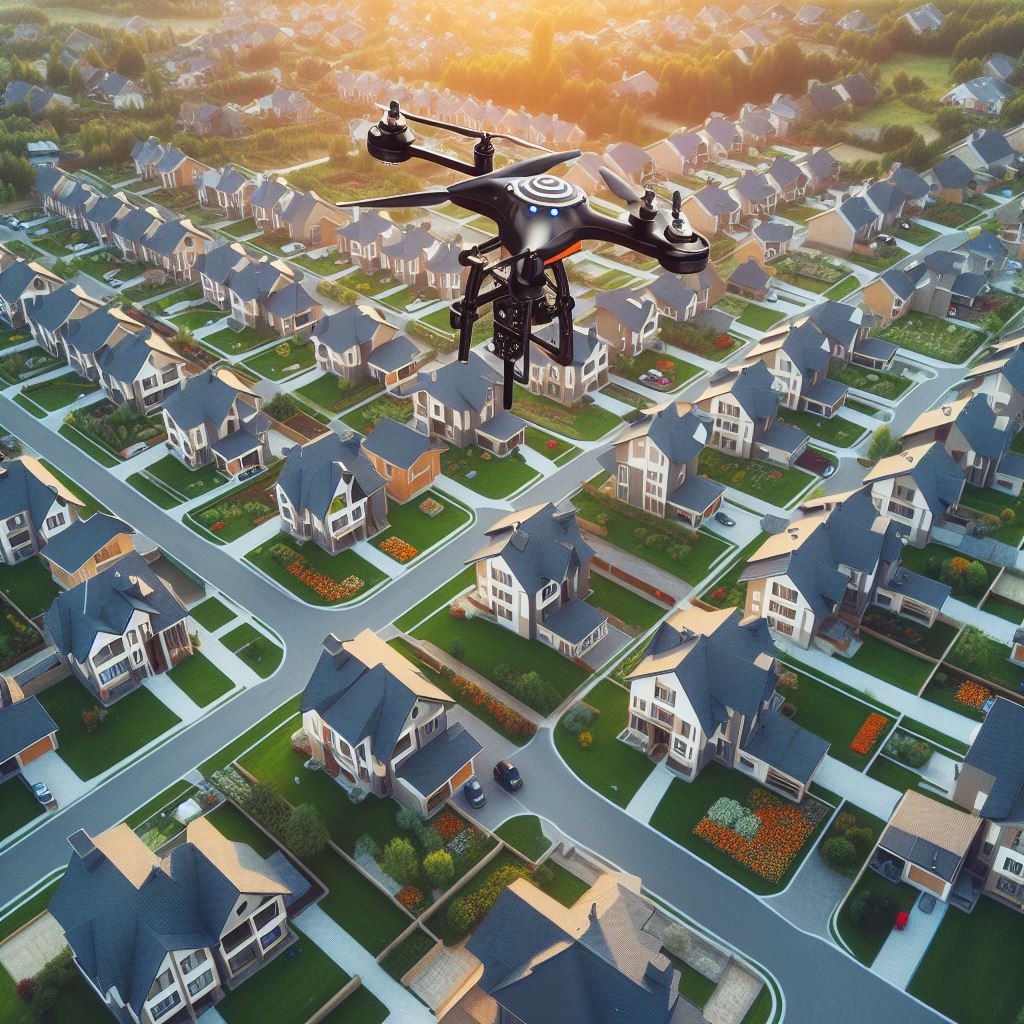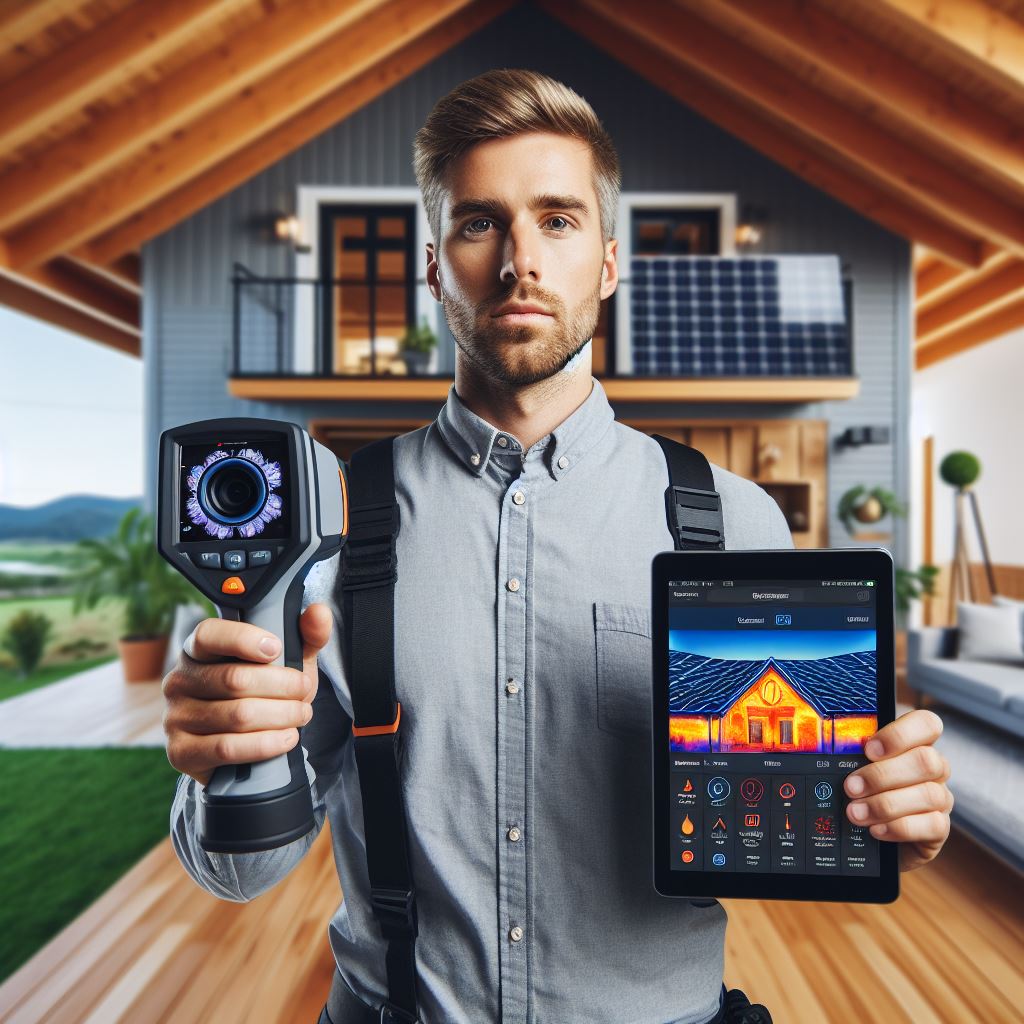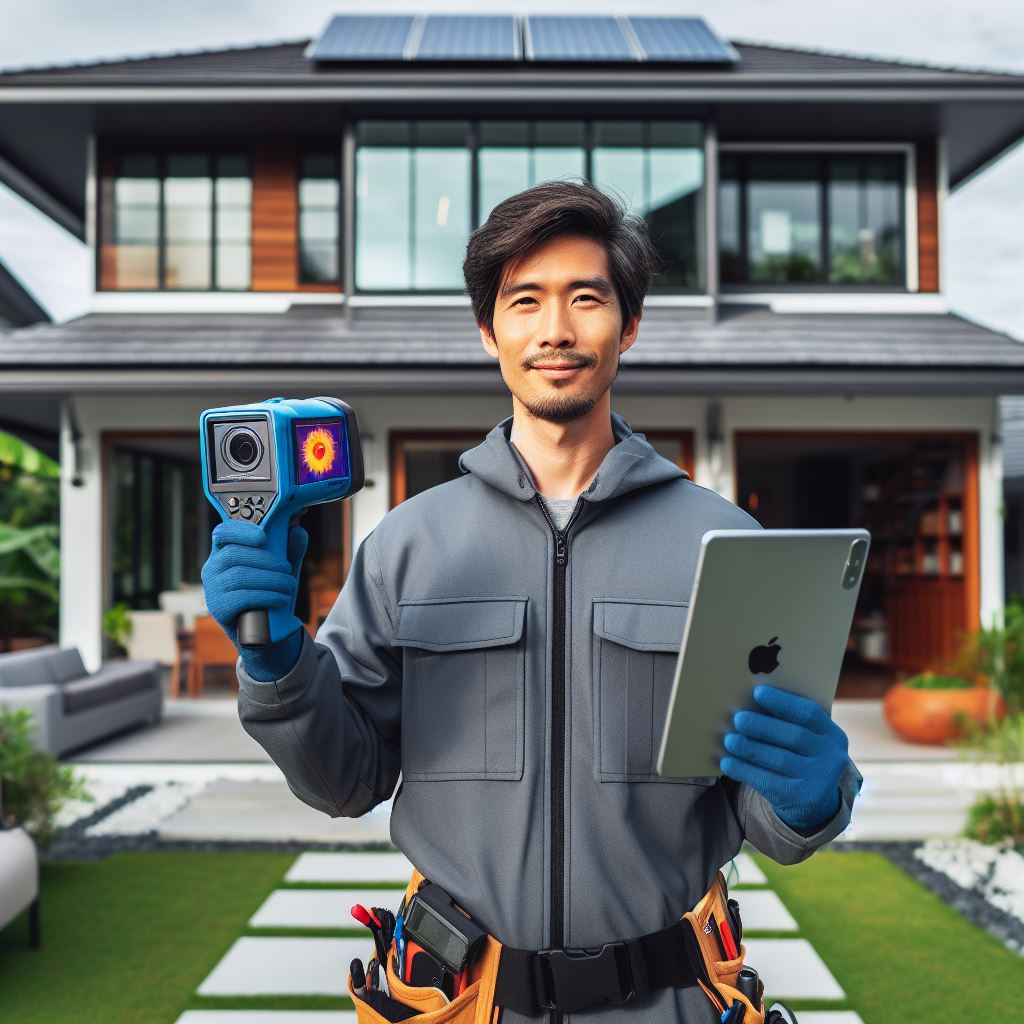Benefits of Using Drones in Home Inspections
Home inspections are an essential part of the home buying process, providing potential buyers with valuable information about the condition of a property. Traditionally, home inspections have been conducted by trained professionals who physically inspect the property, looking for any defects or issues that may affect its value or safety. However, with the advancements in technology, particularly the use of drones, the home inspection method has undergone a significant transformation.

One of the key benefits of using drones in home inspections is the ability to access hard-to-reach areas. Drones equipped with high-resolution cameras can easily navigate through tight spaces, such as roofs, chimneys, and crawl spaces, providing inspectors with a detailed view of these areas. This eliminates the need for inspectors to climb ladders or crawl into confined spaces, reducing the risk of accidents and injuries. Additionally, drones can capture images and videos from various angles, allowing inspectors to thoroughly assess the condition of a property without physically being present in every location.
Another advantage of using drones in home inspections is the speed and efficiency they offer. Traditional home inspections can be time-consuming, especially when inspecting large properties or properties with complex structures. With drones, inspectors can cover a larger area in a shorter amount of time, reducing the overall inspection duration. This not only saves time for both inspectors and homeowners but also allows for quicker turnaround times in providing inspection reports. Additionally, drones can capture real-time footage, enabling inspectors to identify any immediate concerns during the inspection process.
Furthermore, the use of drones in home inspections enhances the accuracy and quality of the inspection. Drones equipped with thermal imaging cameras can detect temperature variations, which can indicate potential issues such as insulation problems or water leaks. This technology allows inspectors to identify hidden defects that may not be visible to the naked eye. Moreover, the high-resolution images and videos captured by drones provide a comprehensive visual record of the property’s condition, which can be used as evidence in case of disputes or insurance claims.

In addition to the benefits mentioned above, the use of drones in home inspections also offers cost savings. Traditional home inspections often require additional equipment, such as ladders, scaffolding, or specialized tools, to access certain areas. By using drones, inspectors can eliminate the need for such equipment, reducing the overall cost of the inspection. Moreover, the efficiency and accuracy of drone inspections can help potential buyers make informed decisions about the property, potentially saving them from costly repairs or renovations in the future.
In conclusion, the use of drones in home inspections has revolutionized the way properties are assessed for potential buyers. The ability of drones to access hard-to-reach areas, their speed and efficiency, enhanced accuracy, and cost savings make them a valuable tool for home inspectors. As technology continues to advance, it is likely that drones will become an integral part of the home inspection process, providing even more benefits to both inspectors and homeowners.
The Role of Artificial Intelligence in Streamlining Home Inspections
How technology has changed the home inspection method is a topic of great interest in the real estate industry. With the advent of artificial intelligence (AI), home inspections have become more streamlined and efficient. AI has revolutionized the way home inspections are conducted, making the process faster, more accurate, and less labor-intensive.
One of the key ways in which AI has transformed home inspections is through the use of drones. Drones equipped with high-resolution cameras can capture detailed images of a property from various angles, providing inspectors with a comprehensive view of the entire structure. This eliminates the need for inspectors to physically climb ladders or access hard-to-reach areas, reducing the risk of accidents and injuries. Additionally, drones can quickly cover large areas, allowing inspectors to assess the condition of roofs, chimneys, and other exterior features with ease.

Another significant development in home inspections is the use of AI-powered software. This software can analyze vast amounts of data and identify potential issues that may not be immediately apparent to human inspectors. For example, AI algorithms can detect patterns in electrical systems, plumbing, and HVAC systems, flagging any anomalies or potential problems. This not only saves time but also ensures that no issues go unnoticed, preventing costly repairs down the line.
Furthermore, AI has made it possible to automate certain aspects of the home inspection process. For instance, AI-powered robots can be programmed to navigate through a property, collecting data and performing basic inspections. These robots can measure room dimensions, check for moisture levels, and even assess the structural integrity of a building. By automating these tasks, inspectors can focus on more complex aspects of the inspection, such as identifying code violations or assessing the overall condition of a property.
In addition to drones, software, and robots, AI has also enabled the development of smart home inspection tools. These tools can monitor and analyze various aspects of a property in real-time, providing homeowners and inspectors with valuable insights. For example, smart sensors can detect leaks, temperature fluctuations, or even the presence of mold or pests. This allows homeowners to address issues promptly and prevent further damage. Inspectors can also use these tools to gather data and make more informed recommendations to their clients.
While AI has undoubtedly improved the home inspection process, it is important to note that it does not replace human inspectors. Rather, it enhances their capabilities and enables them to provide more accurate and comprehensive assessments. Human inspectors still play a crucial role in interpreting the data collected by AI systems, making professional judgments, and providing personalized recommendations based on their expertise and experience.
In conclusion, the role of AI in streamlining home inspections cannot be overstated. From drones capturing detailed images to AI-powered software analyzing data and automating tasks, technology has revolutionized the way inspections are conducted. These advancements have made inspections faster, more accurate, and less labor-intensive. However, it is important to remember that AI is a tool that complements human expertise, and human inspectors remain essential in providing professional assessments and recommendations. As technology continues to evolve, the future of home inspections looks promising, with AI playing an increasingly significant role in ensuring the safety and quality of residential properties.
How Virtual Reality is Revolutionizing the Home Inspection Process
In recent years, technology has made significant advancements in various industries, and the field of home inspection is no exception. One of the most notable technological innovations that has revolutionized the home inspection process is virtual reality (VR). VR has transformed the way home inspections are conducted, providing numerous benefits for both inspectors and homeowners.
Traditionally, home inspections involved physically visiting the property and conducting a thorough examination of its various components. Inspectors would meticulously inspect the structure, electrical systems, plumbing, and other aspects of the home to identify any potential issues. However, this traditional method had its limitations. Inspectors often faced challenges in accessing hard-to-reach areas, such as crawl spaces or attics, which could result in incomplete assessments. Additionally, homeowners were required to be present during the inspection, which could be inconvenient for both parties.
With the advent of VR technology, these limitations have been overcome. Virtual reality allows inspectors to conduct inspections remotely, eliminating the need for physical presence at the property. Using specialized cameras and sensors, inspectors can capture high-resolution images and videos of the property, creating a virtual replica of the home. This virtual replica can then be explored by the inspector from the comfort of their office, using VR headsets and controllers.
The use of VR in home inspections offers several advantages. Firstly, it allows inspectors to thoroughly examine every nook and cranny of the property, including hard-to-reach areas. By virtually navigating through the home, inspectors can identify potential issues that may have been overlooked in traditional inspections. This comprehensive assessment ensures that homeowners are aware of any hidden problems that could affect the value or safety of the property.
Furthermore, VR inspections are not limited by time constraints. Inspectors can revisit the virtual replica of the home multiple times, ensuring that they have thoroughly examined every aspect. This level of detail is particularly beneficial for complex properties or those with unique architectural features. Inspectors can take their time to analyze the virtual model, zooming in on specific areas and making accurate assessments.
Another significant advantage of VR inspections is the convenience it offers to homeowners. With traditional inspections, homeowners had to make arrangements to be present during the inspection, often taking time off work or rearranging their schedules. However, with VR inspections, homeowners can simply provide access to the property for the initial data collection, and the inspection can be conducted at a later time. This flexibility allows homeowners to go about their daily routines without any disruption.
Moreover, VR inspections provide homeowners with a more immersive and interactive experience. They can virtually walk through their own homes, exploring every room and corner. This firsthand experience allows homeowners to better understand the inspector’s findings and ask questions about specific areas of concern. Additionally, homeowners can share the virtual replica with contractors or other professionals for further analysis or estimates, streamlining the repair or renovation process.
In conclusion, virtual reality has revolutionized the home inspection process, offering numerous benefits for both inspectors and homeowners. By eliminating the need for physical presence and providing a comprehensive assessment of the property, VR inspections have overcome the limitations of traditional inspections. The convenience, accuracy, and interactivity of VR inspections have transformed the way homes are inspected, ensuring that homeowners are well-informed about the condition of their properties. As technology continues to advance, it is likely that VR will become an integral part of the home inspection industry, further enhancing the efficiency and effectiveness of inspections.
The Impact of Smart Home Technology on Home Inspections
How technology has changed the home inspection method is a topic of great interest in the real estate industry. With the advent of smart home technology, the traditional methods of conducting home inspections have been revolutionized. This article aims to explore the impact of smart home technology on home inspections and how it has changed the way inspections are conducted.
One of the most significant ways in which smart home technology has changed the home inspection method is through the use of sensors and automation. In the past, home inspectors had to manually check various systems and components of a house, such as the HVAC system, electrical wiring, and plumbing. This process was time-consuming and often prone to human error. However, with the introduction of smart home technology, sensors and automation have made it possible to monitor and control these systems remotely.
For example, smart thermostats can be programmed to regulate the temperature in a house, ensuring optimal comfort and energy efficiency. These thermostats can also be controlled remotely through smartphone apps, allowing homeowners to adjust the temperature even when they are not at home. This eliminates the need for the home inspector to physically check the thermostat during an inspection, saving time and effort.

Similarly, smart home security systems have also had a significant impact on home inspections. In the past, home inspectors had to manually check the security systems, such as door and window sensors, to ensure they were functioning correctly. However, with smart home security systems, these sensors can be monitored remotely, and homeowners can receive real-time alerts on their smartphones if there is any unusual activity. This not only enhances the security of the house but also eliminates the need for the home inspector to physically check these sensors during an inspection.
Another way in which smart home technology has changed the home inspection method is through the use of cameras and drones. In the past, home inspectors had to rely on their visual inspection skills to identify any potential issues or defects in a house. However, with the introduction of cameras and drones, home inspectors can now capture high-resolution images and videos of the house, allowing for a more detailed and accurate inspection.
For example, drones equipped with cameras can be used to inspect the roof of a house, which is often difficult and dangerous for a home inspector to access. These drones can capture images and videos of the roof, allowing the inspector to identify any potential issues, such as missing shingles or damaged flashing. Similarly, cameras can be used to capture images and videos of hard-to-reach areas, such as crawl spaces or attics, providing a comprehensive inspection of the house.
In conclusion, smart home technology has had a significant impact on the home inspection method. The use of sensors and automation has made it possible to monitor and control various systems remotely, eliminating the need for manual checks during an inspection. Additionally, the use of cameras and drones has allowed for more detailed and accurate inspections, capturing high-resolution images and videos of the house. As technology continues to advance, it is likely that the home inspection method will continue to evolve, further enhancing the efficiency and accuracy of inspections.